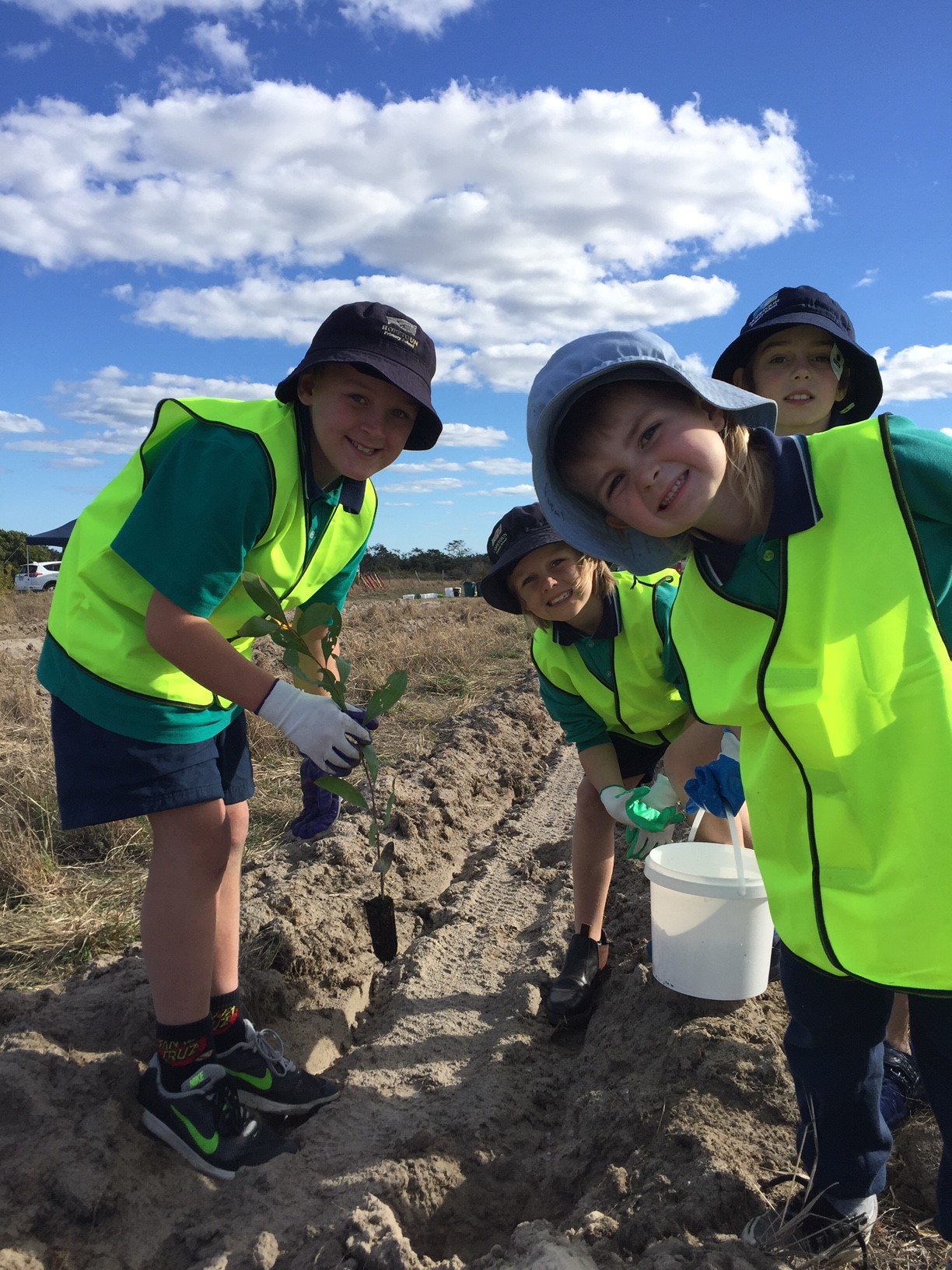Students help give life to old cattle farm
More than 100 hectares of land near Hopetoun has been converted into a wildlife haven through a partnership between South Coast Natural Resource Management (NRM), Water Corporation and Hopetoun Primary School.
Last month, students, volunteers, and Water Corporation staff planted around 4000 native trees, including endangered species, as part of an ongoing partnership to rehabilitate the former Springdale Cattle Farm south of Hopetoun.
Water Corporation Regional Manager Adrian Stewart said the planting project was an important part of a program to further protect drinking water catchment areas.
“Water Corporation purchased the site in 2010 with a view to gradually rehabilitate the area so we can better protect nearby water supply bores for the Hopetoun community,” Mr Stewart said.
“This tied in perfectly with the goals of South Coast NRM and Hopetoun Primary School as students were studying the local environment.
“I would like to thank everyone involved, especially the enthusiastic students, who braved the weather to participate in planting and help improve their local ecosystems.”
South Coast NRM Project Officer Robyn Cail said the group had worked with Water Corporation since 2014 to successfully revegetate parts of the property to restore natural linkages between the Jerdacuttup River and coastal wetlands.
“The rehabilitated corridor is an important haven for species like the endangered Carnaby’s Black Cockatoo and Honey Possum, as well as restoring the banksia dominated ‘Proteaceae Dominated Kwongkan Shrublands Threatened Ecological Community (TEC)’,” she said.
“We are already seeing flocks of over 300 Carnaby’s Black Cockatoos feeding in the vegetation planted in 2014-15.
“Water Corporation should be very proud of the key role they have had in this partnered project with South Coast NRM, which is proving to be a leading example for highly successful biodiversity restoration techniques.”
Hopetoun Primary School Principal Brendan Murray said the vegetation project was a wonderful opportunity for students.
“We have been learning about native vegetation and planting local species at our school, so being included is a real-life larger, scale rehabilitation project that benefits our town was a great opportunity for students,” Mr Murray said.
A recently installed camera trap, specially designed to capture images of the types of birds and animals attracted to the newly rehabilitated area, is the latest addition to the project.
South Coast NRM will continue to work with Water Corporation staff to provide technical guidance about managing revegetation sites, and is seeking funding for future revegetation programs at the site.
This project was supported by South Coast NRM, through funding from the Australian Government’s National Landcare Program.

Contact: Kate Duff
Phone: (08) 9842 4252